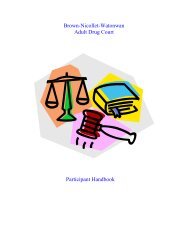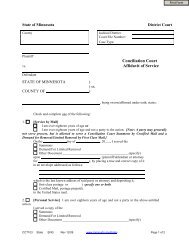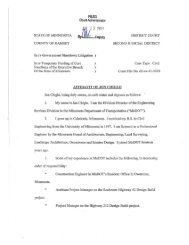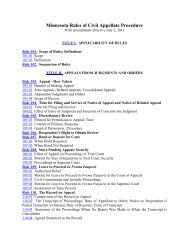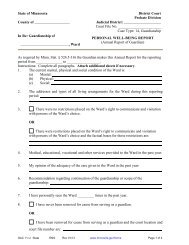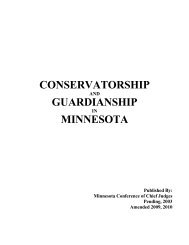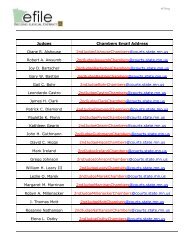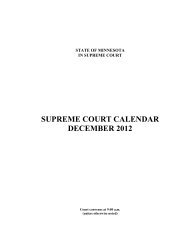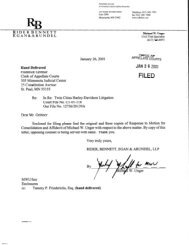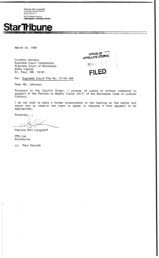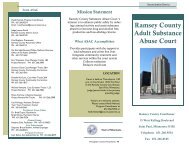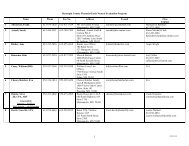MN Advisory Comm Exhibits 1-18 - Minnesota Judicial Branch
MN Advisory Comm Exhibits 1-18 - Minnesota Judicial Branch
MN Advisory Comm Exhibits 1-18 - Minnesota Judicial Branch
You also want an ePaper? Increase the reach of your titles
YUMPU automatically turns print PDFs into web optimized ePapers that Google loves.
c<br />
Journalism 3-776; Mass <strong>Comm</strong>unication Law 34 Murphy Hall<br />
4 credits -- Gillmor Office hours - open<br />
A. Course Objectives<br />
Only journalists possessing some knowledge of mass comnunication law can<br />
thoughtfully assert their rights and avoid needless infractions of the law.<br />
This course is designed to make journalists expert in recognizing their legal<br />
rSghts to gather, prepare and disseminate news and public informatfon, and to<br />
suggest guidelines for ethical pratice.<br />
An effort will be made to cover the following topics: Anglo-American<br />
antecedents and the historical assumptions of freedom of expression in America;<br />
mass media and the First Amendment; the doctrine of no prior restraint; libel<br />
and the defenses against it; privacy and the press; journalist's "privilege"<br />
to protect the identity of sources and the contents of notes, tapes, outtakes,<br />
etc.; the "right" to gather news and the statutory right of access to informa- -<br />
tion; free press and fair trial, judicial orders restricting publication,<br />
attendance of press and public at judicfal proceedings, and the availability<br />
of judicial records and documents, the judge's contempt power, cameras and<br />
broadcast equipment in the courtroom; the censorship of obscenity; the "right"<br />
of citizens to have access to the channels of cmunication; lotteries; copy-<br />
right; the press and the antitrust laws; the press and the labor laws; and<br />
the regulation of broadcasting, with emphasis on the Equal Time provision of<br />
section 315 of the Cormnunications Act and the Fairness Doctrine. r-<br />
Special sections on the constitutional protection and regulation of<br />
advertising, the photojournalist and the law, and the influencing of the opjnion<br />
process in public relations will be assigned students in those specializatfons.<br />
This course is d necessary first step toward a more comprehensive,<br />
philosophical and research oriented study of freedom of speech, press, assembly<br />
and petjtion in 5-777 and subsequent graduate seminars.<br />
B. Textbook<br />
Gillnor, Donald M.-and Jerome A. Barr-on, Mass <strong>Comm</strong>unication Law: Cases<br />
and <strong>Comm</strong>ent. St. Paul: West Publishing Company, 3d ed., 1979.<br />
Reference<br />
Denniston, Lyle W., The Reporter and the Law: Techniques of Coverinq<br />
the Courts. New York: Hastings House, 1980. Murphy Reserve.



